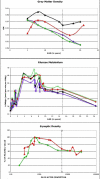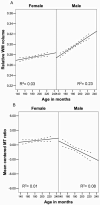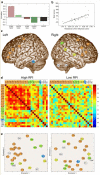Why do many psychiatric disorders emerge during adolescence?
- PMID: 19002191
- PMCID: PMC2762785
- DOI: 10.1038/nrn2513
Why do many psychiatric disorders emerge during adolescence?
Abstract
The peak age of onset for many psychiatric disorders is adolescence, a time of remarkable physical and behavioural changes. The processes in the brain that underlie these behavioural changes have been the subject of recent investigations. What do we know about the maturation of the human brain during adolescence? Do structural changes in the cerebral cortex reflect synaptic pruning? Are increases in white-matter volume driven by myelination? Is the adolescent brain more or less sensitive to reward? Finding answers to these questions might enable us to further our understanding of mental health during adolescence.
Figures




References
-
- Bushong S. Magnetic resonance imaging. 3rd ed Mosby Inc.; 2003.
-
- Roberts TP, Mikulis D. Neuro MR: principles. J Magn Reson Imaging. 2007 Oct;26(4):823–837. - PubMed
-
- Keshavan MS, Kapur S, Pettegrew JW. Magnetic resonance spectroscopy in psychiatry: Potential, pitfalls and promise. The American journal of psychiatry. 1991;148(8):976–985. - PubMed
-
- Logothetis NK, Pauls J, Augath M, Trinath T, Oeltermann A. Neurophysiological investigation of the basis of the fMRI signal. Nature. 2001 Jul 12;412(6843):150–157. - PubMed
-
- Lenroot RK, Giedd JN. Brain development in children and adolescents: insights from anatomical magnetic resonance imaging. Neuroscience and biobehavioral reviews. 2006;30(6):718–729. - PubMed
Publication types
MeSH terms
Grants and funding
LinkOut - more resources
Full Text Sources
Medical

